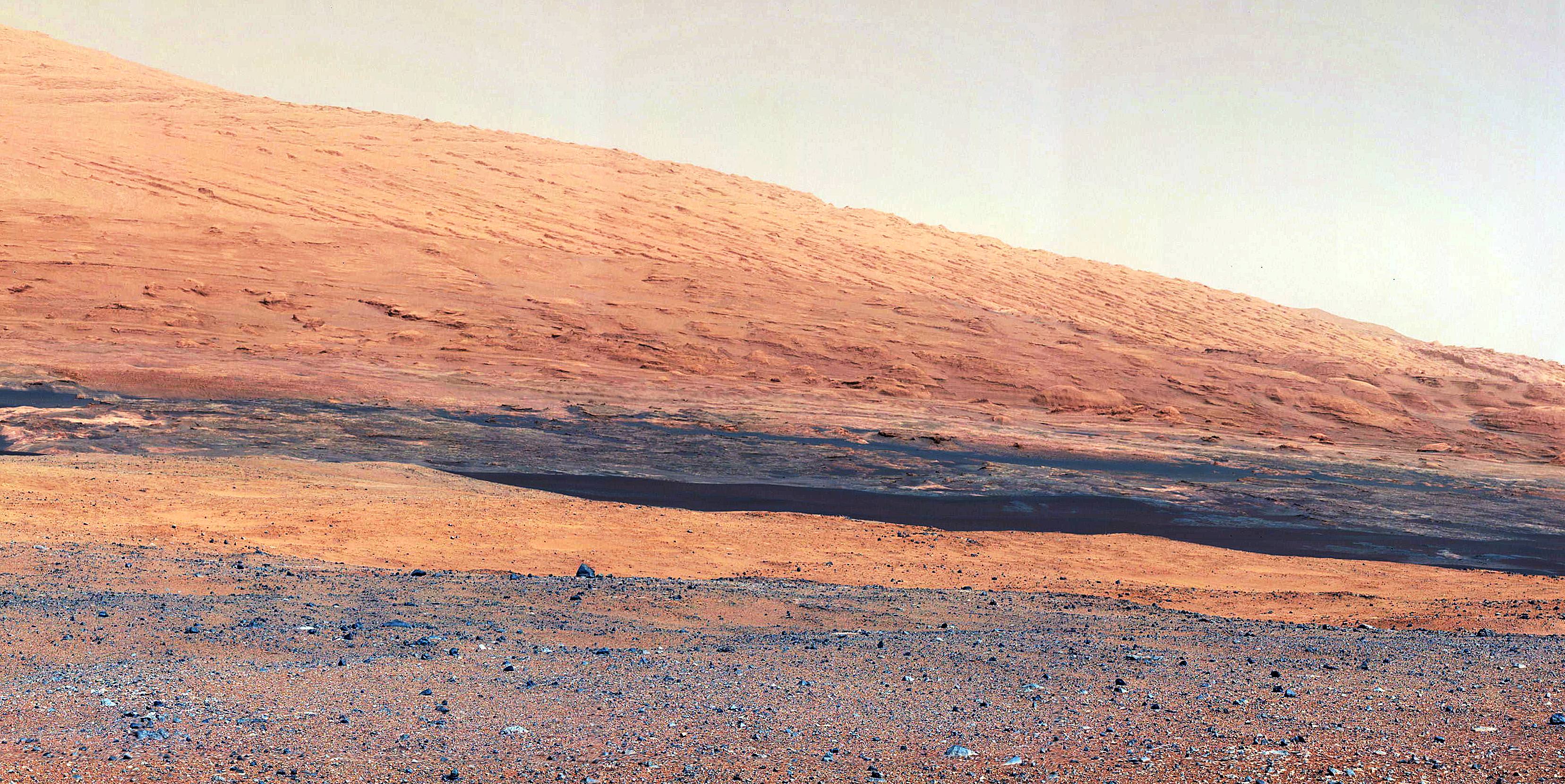The slopes of Gale Crater as seen by Curiosity are reminiscent of the American southwest (NASA/JPL-Caltech)
“Mars ain’t no kind of place to raise your kids; in fact it’s cold as hell” sang Elton John in “Rocket Man”, and although the song was released in 1972 — four years before the first successful landing on Mars — his weather forecast was spot-on. Even though the fantastic images that are being returned from NASA’s Curiosity rover show a rocky, ruddy landscape that could easily be mistaken for an arid region of the American Southwest one must remember three things: this is Mars, we’re looking around the inside of an impact crater billions of years old, and it’s cold out there.
Mars Exploration Program blogger Jeffrey Marlow writes in his latest “Martian Diaries” post:
Over the first 30 sols, air temperature has ranged from approximately -103 degrees Fahrenheit (-75 Celsius) at night to roughly 32 degrees Fahrenheit (0 Celsius) in the afternoon. Two factors conspire to cause such a wide daily range (most day-night fluctuations on Earth are about 10 to 30 degrees Fahrenheit). The martian atmosphere is very thin; with fewer molecules in the air to heat up and cool down, there’s more solar power to go around during the day, and less atmospheric warmth at night, so the magnitude of temperature shifts is amplified. There is also very little water vapor; water is particularly good at retaining its heat, and the dryness makes the temperature swings even more pronounced.
In that way Mars is like an Earthly desert; even after a blisteringly hot day the temperatures can plummet at night, leaving an ill-prepared camper shivering beneath the cold glow of starlight. Except on Mars, where the Sun is only 50% as bright as on Earth and the atmosphere only 1% as dense, the nighttime lows dip to Arctic depths.
“Deserts on Earth have very extreme temperature ranges,” says Mars Science Laboratory Deputy Project Scientist, Ashwin Vasavada. “So if you take a desert on Earth and put it in a very thin atmosphere 50% farther from the Sun, you’d have something like what we’re seeing at Gale Crater.”
And although the afternoon temperatures in Gale may climb slightly above freezing that doesn’t mean liquid water will be found pooling about in any large amounts. Curiosity’s in no danger from flash floods on Mars… not these days, anyway.
With atmospheric pressure just above water’s thermodynamic triple point, and temperatures occasionally hovering around the freezing point, it is likely that local niches are seeing above-zero temperatures, and Vasavada acknowledges, “liquid water could exist here over a tiny range of conditions.” But don’t expect a Culligan water plant in Gale Crater any time soon. “We wouldn’t expect for Curiosity to see liquid water, because it would evaporate or re-freeze too quickly,” explains Vasavada. “With so little water vapor in the atmosphere, any liquid water molecules on the surface would quickly turn to gas.”
So when on Mars, drink your coffee quickly. (And pack a blanket.)
“Gale Crater may look like the dusty, basaltic basins of the American southwest, but one look at the thermometer will send you running for the winter coat.”
– Jeffrey Marlow, Martian Diaries
Read Marlow’s full article here.
Image: Sunset on Mars seen by the MER Spirit from Gusev Crater in 2005 (NASA/JPL-Caltech)


